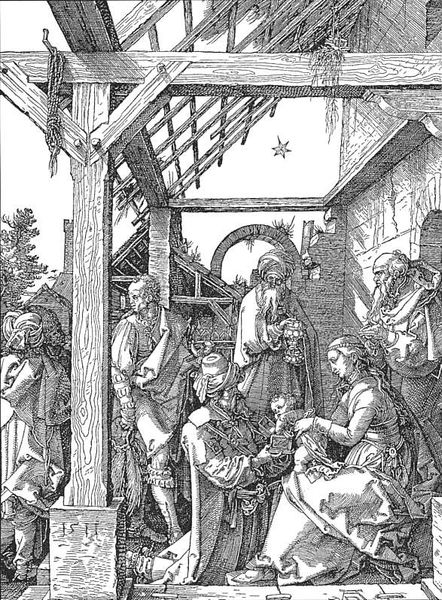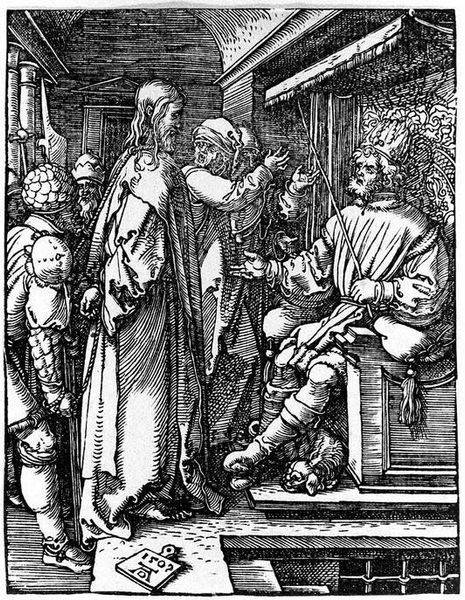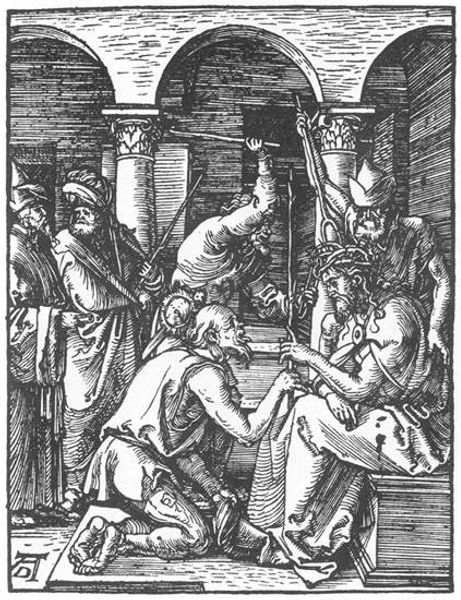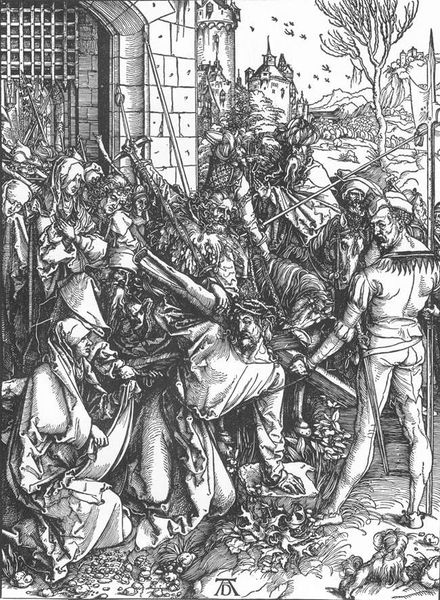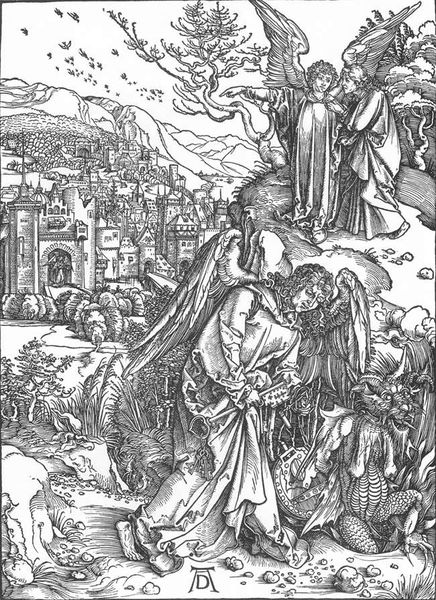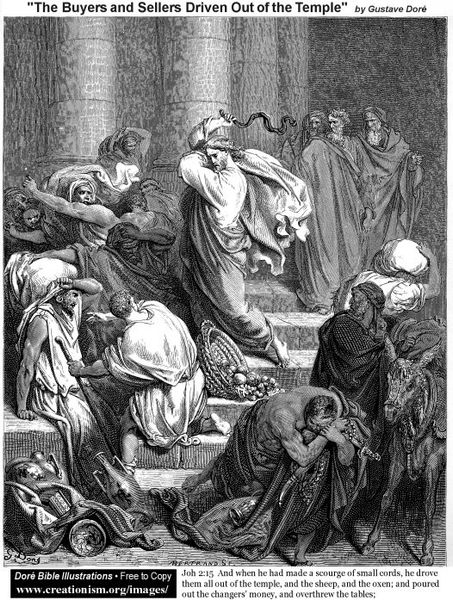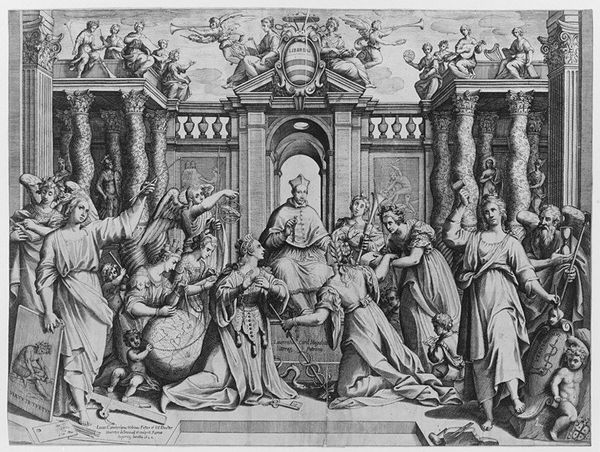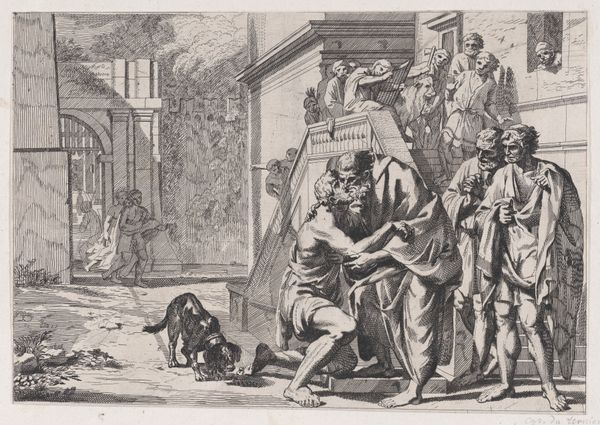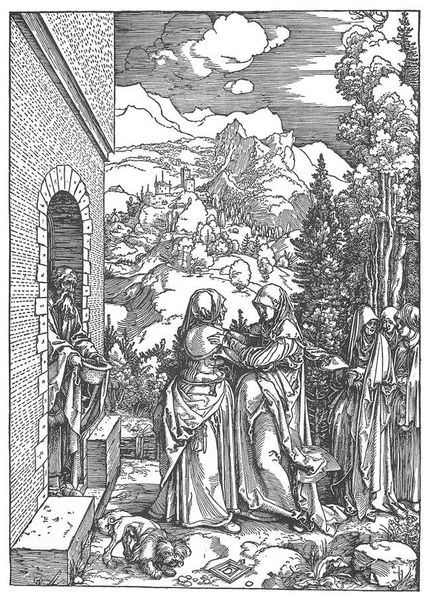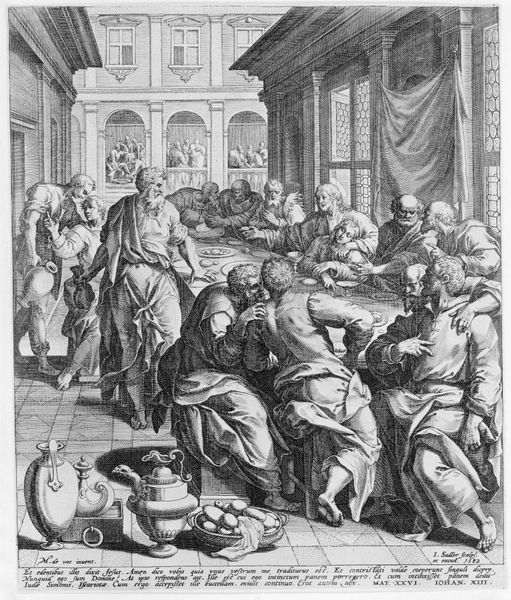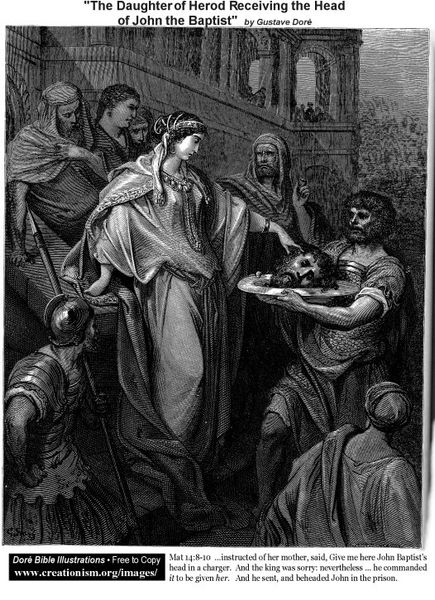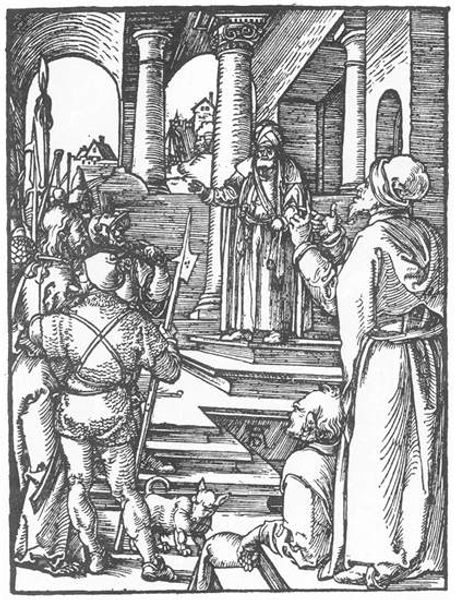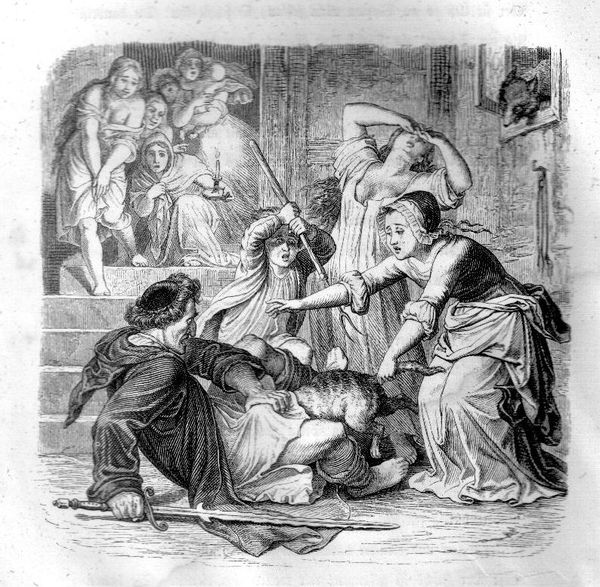
print, engraving
#
allegory
#
baroque
# print
#
landscape
#
figuration
#
history-painting
#
engraving
Copyright: Public domain
Curator: I'm drawn to the overall effect, particularly the sense of idealized beauty interwoven with the tools of cultivating it; it’s almost theatrical in presentation, don’t you think? Editor: You've keyed in on the baroque style so typical of its era. We're looking at the title page from the "Flora," created around 1638. The engraving, made after a design by Pietro da Cortona, presents Flora, the goddess of flowering and fertility. Curator: Yes, there's that central figure adorned with blossoms. But she isn't alone. The entire scene speaks volumes through its allegorical assembly. Look at how figures around her present wreathes, engage with objects in her retinue. Do these actions point to specific cultural values attributed to Flora? Editor: Precisely. This title page isn't merely decorative; it is loaded with symbolism. The flanking figures are adorning not only her but also classical busts or architectural facades with garlands, hinting at rebirth, springtime, the renewal of not just nature but classical ideals during the baroque era. Curator: The juxtaposition is compelling. We have those earthly gardening tools in the foreground -- the practical instruments of cultivation juxtaposed with the idealized goddess. What is the message here, exactly? Editor: I think it speaks to the way the baroque period synthesized the natural and the intellectual, reflecting on how active care or "cultura" of the mind allows nature to blossom, too. It would seem the engraving promotes knowledge, wisdom and a thoughtful and intellectual appreciation for nature through imagery rich with classical cues. The pursuit of horticulture and botany here mirrors broader intellectual and artistic achievements. Curator: I concur that this imagery served the socio-political context of celebrating humanist interests in classical times, science, and the arts, showcasing these activities with the approval of powerful patrons. How these visual emblems serve propaganda! Editor: Yes! I love seeing how it bridges antiquity and modernity, presenting not only a deity, but values cherished in 17th-century European society. Thank you for illuminating this piece and drawing attention to these values within its cultural moment.
Comments
No comments
Be the first to comment and join the conversation on the ultimate creative platform.
